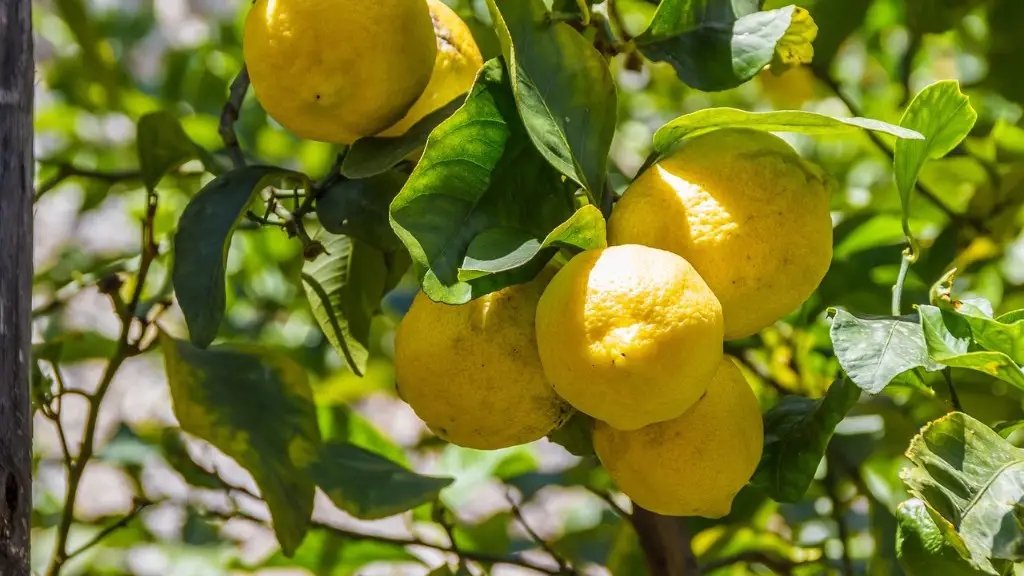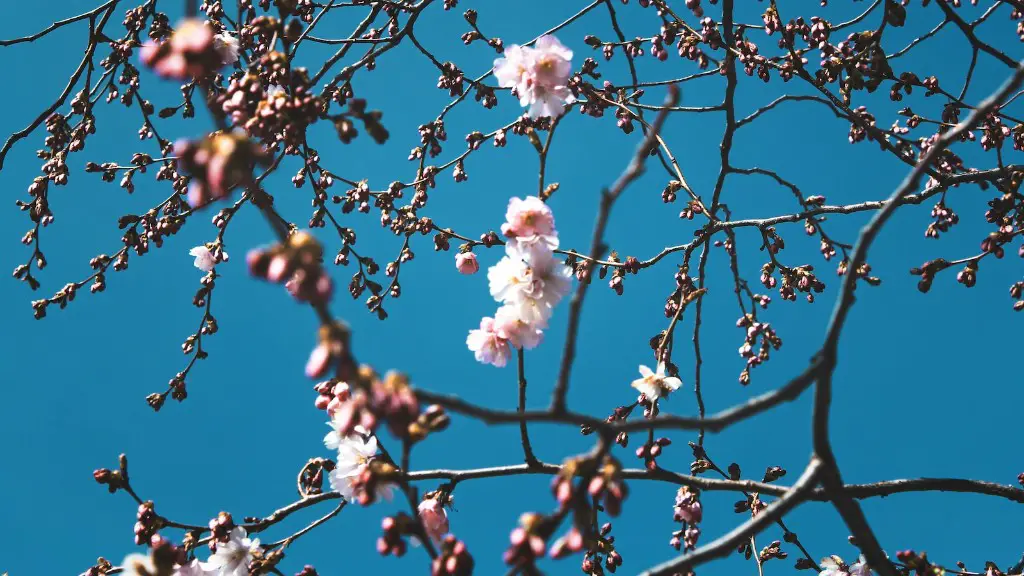Lemon trees are one of the most popular and hardy citrus plants, and most of them are easy to grow in the home garden. But how long do lemon trees take to mature? Like all fruit trees, the answer is not straightforward. To provide a general overview, a lemon tree typically takes between four and six years to reach maturity but is capable of producing fruits in its second season.
Once planted, the lemon tree will take between three and five years to reach its full height. The size of the tree itself depends on the variety of lemon grown and the climate in which it is planted. For instance, Eureka and Lisbon lemons will reach 12 to 20 feet when planted in warmer regions. Generally, a lemon tree is ready to produce fruit when it reaches 6-10 feet in height.
Once mature, lemon trees will typically produce between 6 to 200 lbs of fruit, depending on the variety. Although lemon trees produce fruit year-round the peak season for harvesting the fruit is from May to December. Lemons harvested during their peak season tend to be more succulent and less acidic than out-of-season fruit.
Harvesting lemons from mature trees typically requires some skill and effort. To ensure optimal storage and preservation, lemons should be harvested before they’re fully ripe. This will require pruning the fruit from the tree and discarding any damaged or overripe fruit. Once harvested, the fruit should be used quickly or sliced and stored in the refrigerator.
When grown in optimal conditions, a mature lemon tree has a life expectancy of between 25 to 30 years. This lifespan can be further extended by providing proper care and maintenance. This includes pruning the tree to preserve its size, applying fertilizer, and treating the lemon tree for potential diseases.
Once established, lemon trees are fairly low maintenance and very hardy. Since they are often grown in pots or containers, they are especially well-suited to smaller or indoor gardens. With a bit of knowledge and a little bit of effort, anyone can grow their own juicy and delicious lemons at home.
Other Cultivation Methods
In addition to more traditional methods of cultivation, lemon trees can also be propagated through cuttings, which will be ready to produce fruit within two to three years. There is also a fast-growing lemon tree called Meyer Lemon that can reach fruiting maturity quickly, within two years.
Meyer Lemon trees tend to produce higher yields than more common varieties, allowing for larger harvests of fruit. It is also very hardy, tolerating a wide range of temperatures and soils. However, Meyer Lemon trees are somewhat sensitive to cold and can suffer damage in temperatures below 25 degrees Fahrenheit.
For those looking to add a lemon tree to their garden, there are a few considerations to keep in mind. It is important to pick a variety that is suited to your climate, as some are extremely cold-sensitive while others can tolerate extreme heat. Additionally, it is important to choose a variety that is tolerant of local pests and diseases.
Before planting a lemon tree, the soil should be amended with organic matter and the tree should be watered frequently for the first two years. The soil should also be regularly tested for pH levels, as lemon trees require a pH of 6-6.8 for optimal health.
Fruit Production Strategies
Once established, it is important for growers to create a strategy for controlling fruit production. This is particularly true for Meyer Lemon trees which are very productive and can end up dropping most of the fruit to the ground. To help control the fruit size and production, growers can pick smaller fruits every two weeks to ensure the tree is producing quality fruit.
Growers can also practice seasonal strategies, such as pruning the tree and protecting it from frost in the winter months. By following these strategies growers can extend the harvesting season and ensure their lemon trees produce the highest yields year round.
Finally, proper pest and disease control is paramount for lemon trees. It is important to note that citrus trees can be susceptible to a variety of pests, such as scales and mites, as well as a wide range of diseases. It is important to stay vigilant and inspect the tree regularly for any signs of infestation or disease.
Other Uses for Lemon Trees
In addition to the fruit, the leaves, bark, and flowers of the lemon tree also have a variety of uses. The flowers are fragrant and can be brewed into a tea. The leaves can be used as a savory seasoning, while the bark can be used to make a medicinal tea that is said to help with digestion.
Lemon leaves can also be used to make an aromatic wreath. The leaves can be strung together and hung on doors, windows, or walls as a fragrant home decoration. Lemon tree wood, meanwhile, can be used to make furniture and ornamental items.
Harvesting and Storing Lemons
When harvesting lemons from a mature tree, it is important to pay attention to their ripeness. Lemons should be harvested before they are fully ripe, as this will help ensure they are more likely to last through storage. To reduce the risk of spoilage, lemons that have been harvested should be used quickly, or can be sliced and stored in the refrigerator.
Lemons can also be stored frozen if they are not to be eaten in the immediate future. This can be done by slicing and placing the fruit in an airtight container or bag, then freezing them in the freezer. Lemons that have been frozen can be kept for up to six months.
Conclusion
Lemon trees are rewarding to grow and require minimal effort to maintain. While it typically takes four to six years for lemon trees to produce fruit, Meyer Lemons can reach fruiting maturity in as little as two years. To help ensure lemon trees produce the highest yields and remain healthy, it is important to practice preventative maintenance and good harvesting and storage practices. Finally, lemon trees can also be used for more than just their tangy fruit, as the flowers, leaves, bark, and wood can be used for various practical, decorative, and medicinal uses.


